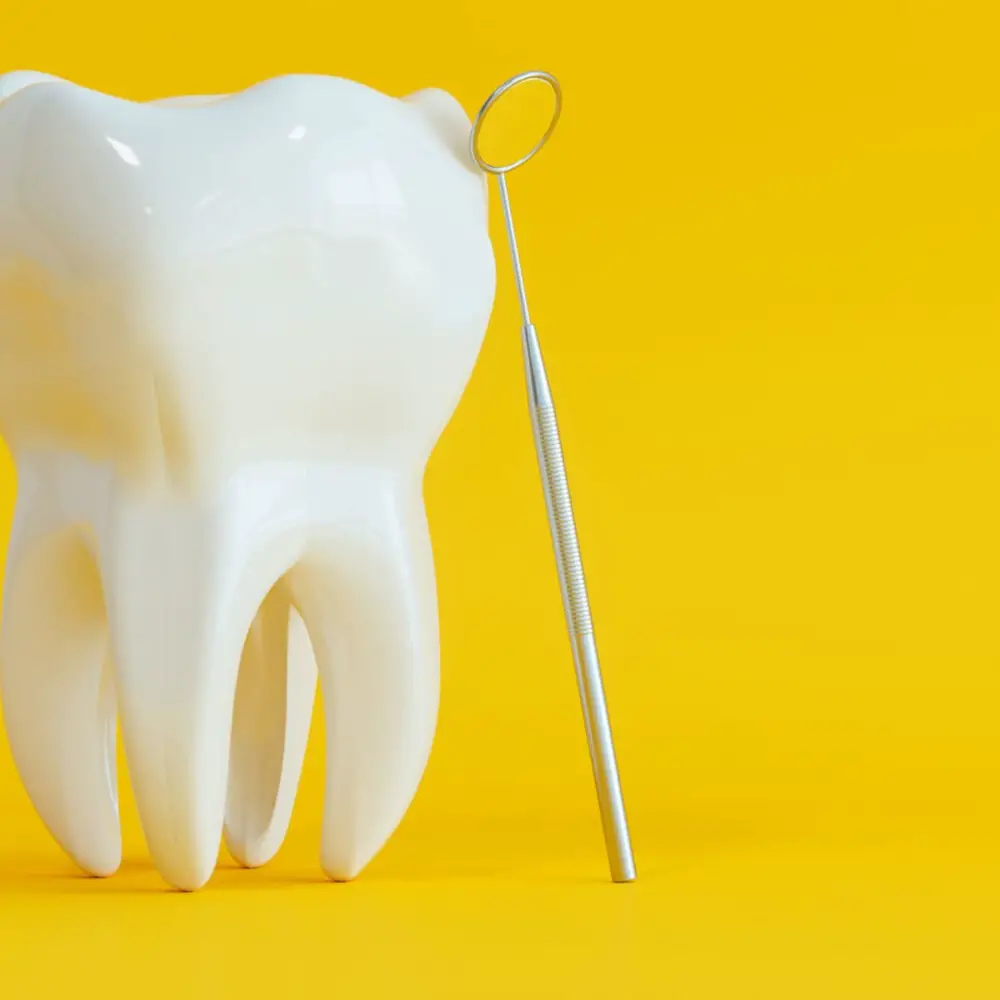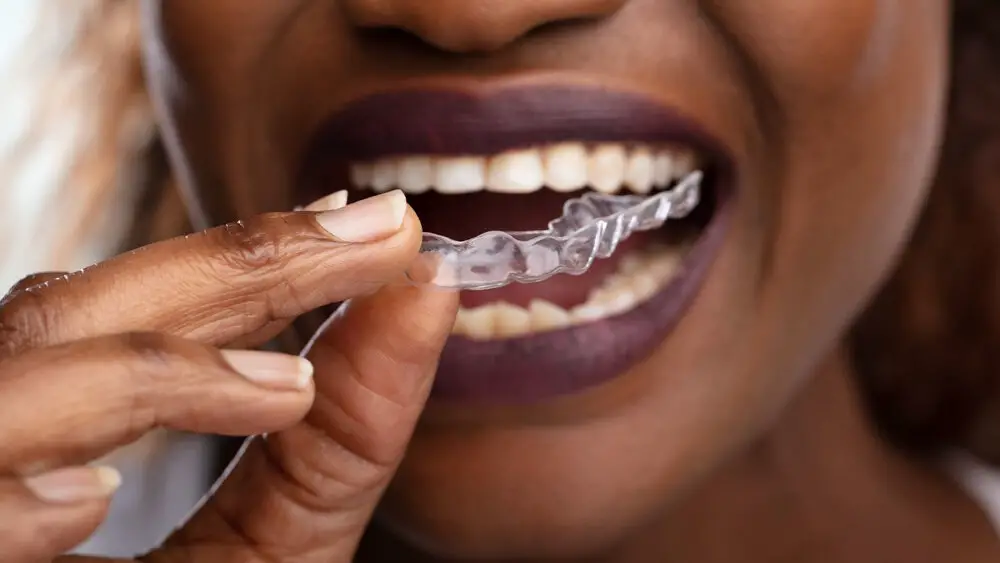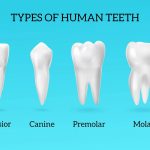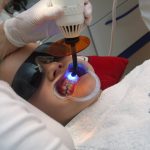Say Goodbye to White Spots on Teeth: Easy Fixes and Prevention Tips

White spots on teeth can be a cause of discomfort and self-consciousness for many people. These spots can occur due to a variety of reasons, including poor dental hygiene, excessive fluoride intake, and enamel hypoplasia. Fortunately, there are easy fixes and prevention tips that can help you say goodbye to white spots on teeth and restore your confidence in your smile. One easy fix for white spots on teeth is teeth whitening. Teeth whitening can help reduce the appearance of white spots by lightening the overall color of your teeth. There are several teeth whitening options available, including in-office treatments, at-home kits, and natural remedies. It’s important to note, however, that teeth whitening may not be effective for all types of white spots and may not be a permanent solution. It’s important to consult with your dentist to determine the best teeth whitening option for your specific needs.
White spots on teeth are a common dental issue that can occur due to various reasons. They are usually caused by demineralization, which is the loss of minerals, such as calcium and phosphate, from the tooth enamel. This can happen due to poor oral hygiene, consumption of acidic foods and drinks, and certain medical conditions. These white spots can be unsightly and can lead to tooth decay if left untreated. Fortunately, there are many easy fixes and prevention tips that can help get rid of white spots on teeth, such as improving oral hygiene, avoiding acidic foods and drinks, and getting professional dental treatments like enamel microabrasion or dental bonding. By taking proper care of your teeth and following these tips, you can say goodbye to those pesky white spots and achieve a brighter, healthier smile.
White spots on teeth can occur due to a variety of reasons. One of the most common causes is dental fluorosis, which occurs when the teeth are exposed to high levels of fluoride during development. This can result in white, chalky spots on the teeth. Another cause is poor dental hygiene, which can lead to the buildup of plaque and the development of white spots. Additionally, consuming too many acidic or sugary foods and drinks can weaken the enamel on teeth, leading to white spots. In some cases, white spots may also be a sign of more serious dental issues, such as enamel hypoplasia or tooth decay. It is important to identify the cause of white spots in order to properly treat and prevent them from reoccurring.
Easy Fixes for White Spots on Teeth

White spots on teeth can be unsightly and make people self-conscious about their smile. Fortunately, there are several easy fixes for these spots. One of the most effective options is to use remineralizing toothpaste or mouthwash. These products contain calcium and phosphate, which can help strengthen tooth enamel and reduce the appearance of white spots. It’s important to note that these products should be used regularly to see the best results. Another easy fix for white spots on teeth is to make changes to your diet. Consuming foods and drinks that are high in sugar or acidic can weaken tooth enamel and contribute to white spots. To combat this, try to limit your intake of sugary and acidic foods and drinks, and instead opt for foods that are rich in calcium and vitamin D, such as dairy products, leafy greens, and fatty fish. Additionally, drinking plenty of water can help to neutralize acid in the mouth and promote healthy saliva production, which can prevent white spots from forming in the first place. By incorporating these simple changes into your daily routine, you can say goodbye to white spots on your teeth and hello to a brighter, healthier smile.
Teeth whitening treatments have become increasingly popular in recent years as people strive to achieve a brighter, more youthful smile. There are several options available, from in-office treatments to at-home kits. In-office treatments typically involve the use of a high-concentration bleaching agent and can produce dramatic results in just one session. At-home kits may take longer to achieve the desired results, but they are often more affordable and convenient. It’s important to note that teeth whitening treatments do not work on all types of discoloration, and they can cause sensitivity or damage to the teeth if not used properly. Consulting with a dental professional before starting any whitening treatment is recommended to ensure the best results and minimize any potential risks.
Dental bonding is a cosmetic dental procedure that involves applying a tooth-colored resin material to teeth to improve their appearance. It can be used to fix a variety of dental issues, including white spots on teeth caused by enamel hypoplasia or fluorosis. The bonding material is carefully applied and molded to match the surrounding teeth, then hardened with a special light. The result is a natural-looking, smooth surface that blends seamlessly with the rest of the teeth. Dental bonding is a relatively quick and painless procedure that can be completed in one visit to the dentist’s office, making it a popular choice for those looking to improve the appearance of their smile.
Microabrasion is a cosmetic dental procedure that is used to remove white spots on teeth. This treatment involves removing a thin layer of the enamel on the teeth using an abrasive material. The goal is to remove the outer layer of the tooth that has been affected by the white spots and reveal the healthy enamel underneath. Microabrasion is a minimally invasive procedure that can be completed in one visit to the dentist’s office. It is a safe and effective treatment option for those who are looking to improve the appearance of their teeth and get rid of unsightly white spots. Additionally, it is a more affordable option compared to other cosmetic dental procedures like veneers or crowns.
Fluoride treatment is a preventive measure that can help stop white spots from forming on teeth. Fluoride is a natural mineral that strengthens tooth enamel, making it more resistant to decay. During a fluoride treatment, a solution containing a higher concentration of fluoride than is found in toothpaste or mouthwash is applied to the teeth. This treatment can be done in a few different ways: as a gel or foam that is placed in a mouthguard, as a rinse that is swished around in the mouth for several minutes, or as a varnish that is painted onto the teeth. Fluoride treatments are quick and painless and can be done at a dental office or at home with a prescription from a dentist.
Prevention Tips for White Spots on Teeth

White spots on teeth can be a sign of early tooth decay, mineral loss, or poor oral hygiene. Prevention is always better than cure, and there are steps you can take to prevent white spots from appearing on your teeth. One effective prevention tip is to practice good oral hygiene. Brush your teeth twice a day with fluoride toothpaste, floss daily, and use mouthwash to remove any remaining bacteria in your mouth. Regular dental checkups and cleanings can also help prevent white spots on your teeth. Your dentist can identify early signs of tooth decay and provide treatment before it progresses to more serious problems. Another way to prevent white spots on your teeth is to watch what you eat and drink. Limit your intake of sugary and acidic foods and drinks, such as soda, citrus fruits, and candy. These foods and drinks can erode the enamel on your teeth, making them more susceptible to decay. Drinking plenty of water and eating a balanced diet rich in calcium and other minerals can also help keep your teeth healthy and prevent white spots from forming. By following these prevention tips, you can maintain a healthy smile and avoid the embarrassment and discomfort of white spots on your teeth.
Brushing and flossing regularly is an essential part of maintaining good oral hygiene. Neglecting to brush and floss can lead to the buildup of plaque, which can eventually cause white spots on teeth. Brushing twice a day with a fluoride toothpaste and flossing at least once a day can help remove plaque, food particles, and bacteria from teeth and gums. It’s also important to use the right brushing technique, using gentle circular motions and brushing all surfaces of the teeth. Flossing can also help clean between teeth where a toothbrush can’t reach. By making brushing and flossing a daily habit, you can help prevent white spots on teeth and keep your smile healthy and bright.
Avoiding sugary and acidic foods and drinks is crucial to prevent white spots on teeth. Sugars and acids found in foods and drinks can erode the enamel on teeth, making them more susceptible to developing white spots. Limiting the consumption of sugary and acidic foods and drinks, such as soda, candy, citrus fruits, and juices, can help to protect the enamel and maintain a healthy smile. Instead, opt for water, milk, and foods that are rich in calcium and other essential nutrients that promote strong teeth. By making these simple dietary changes, you can reduce your risk of developing white spots on your teeth and maintain a bright, healthy smile for years to come.
Drinking plenty of water is not only essential for overall health but also plays a crucial role in preventing white spots on teeth. Water helps to flush out harmful bacteria and food particles that can cause decay and discoloration. Additionally, staying hydrated ensures that saliva production remains at optimal levels, which is important for neutralizing acids in the mouth and protecting tooth enamel. It is recommended to drink at least eight glasses of water per day and to avoid sugary drinks that can contribute to tooth decay. By prioritizing hydration and making water a staple in your daily routine, you can help keep your teeth healthy and free of unsightly white spots.
Using fluoride toothpaste is an effective way to prevent the formation of white spots on teeth. Fluoride is a mineral that helps strengthen tooth enamel and makes it more resistant to acid attacks that can cause white spots. It also remineralizes areas of the enamel that have already begun to demineralize, reversing the early stages of white spot formation. When choosing a fluoride toothpaste, look for one with at least 1,000 ppm (parts per million) of fluoride. Be sure to brush your teeth twice a day for at least two minutes, focusing on the areas where white spots are most likely to form, such as near the gum line. By using fluoride toothpaste regularly and maintaining good oral hygiene habits, you can keep white spots at bay and enjoy a healthy, bright smile.
Regular dental check-ups and cleanings are crucial in preventing and treating white spots on teeth. A skilled dentist can detect the early stages of tooth decay and provide treatment to prevent further damage. Additionally, a thorough cleaning can remove plaque and bacteria that contribute to the formation of white spots. Neglecting dental visits can lead to more serious oral health issues and potentially costly treatments down the line. By prioritizing regular dental visits, individuals can maintain a healthy smile and prevent the development of unsightly white spots on their teeth.
Natural Remedies for White Spots on Teeth

If you’re experiencing white spots on your teeth, don’t worry, you’re not alone. This is a common dental issue that affects many people of all ages. The good news is that there are natural remedies that can help you get rid of those pesky white spots. One of the most effective remedies is oil pulling. This ancient Ayurvedic practice involves swishing oil around in your mouth for several minutes. Coconut oil is a popular choice because of its antibacterial properties. Simply put a tablespoon of coconut oil in your mouth, swish it around for 15-20 minutes, then spit it out and rinse your mouth with water. You can do this once a day to help reduce the appearance of white spots on your teeth. Another natural remedy for white spots on teeth is baking soda. Baking soda is a mild abrasive that can help remove surface stains and promote a brighter smile. Mix a small amount of baking soda with water to form a paste, then brush your teeth with it for 2-3 minutes. Do this once a week to help gently buff away any white spots on your teeth. Additionally, you can add a few drops of peppermint oil to the baking soda paste for a refreshing taste and added benefits. Remember to always brush and floss regularly and visit your dentist for regular check-ups to maintain optimal oral health.
Oil pulling is an ancient Ayurvedic practice that involves swishing oil in your mouth for several minutes to remove toxins and improve oral hygiene. This method is believed to be effective in removing bacteria and plaque from teeth and gums, thus preventing white spots from forming. Coconut oil is a popular choice for oil pulling, as it has natural antimicrobial properties and a pleasant taste. To try this technique, simply swish a tablespoon of coconut oil in your mouth for 10-15 minutes, then spit it out and rinse with water. While more research is needed to fully understand the benefits of oil pulling, many people swear by its ability to improve dental health and prevent unsightly white spots from developing on their teeth.
Baking soda and hydrogen peroxide are two readily available household ingredients that can help get rid of white spots on teeth. Baking soda’s abrasive nature helps remove surface stains while hydrogen peroxide acts as a bleaching agent. However, caution must be exercised when using these ingredients. Overuse of baking soda can erode tooth enamel, and excessive use of hydrogen peroxide can cause gum sensitivity and irritation. Diluting hydrogen peroxide with water can help minimize these risks. It’s important to note that these remedies may only work on mild cases of white spots, and professional dental treatment may be necessary for severe cases. Regular brushing, flossing, and dental checkups can also prevent the formation of white spots on teeth.
Coconut oil and turmeric paste is a natural remedy that has been used for centuries to whiten teeth and promote oral health. Coconut oil contains lauric acid, which has antibacterial properties that can help kill harmful bacteria in the mouth. Turmeric, on the other hand, is a natural teeth whitener that can help remove stains caused by coffee, tea, and other foods. To make the paste, simply mix coconut oil and turmeric powder until a paste-like consistency is achieved. Apply the paste to your teeth and let it sit for several minutes before rinsing thoroughly. This remedy is not only effective in removing white spots on teeth, but it also helps to improve overall oral hygiene.
Aloe vera gel is a natural remedy that can help to prevent and treat white spots on teeth. This gel is derived from the leaves of the aloe vera plant and contains a variety of beneficial compounds, including antioxidants and anti-inflammatory agents. Aloe vera gel can be applied directly to the teeth and gums to help reduce inflammation and promote healing. Additionally, the gel can help to remineralize the teeth, which can prevent the formation of white spots and other forms of tooth decay. Overall, aloe vera gel is an excellent natural remedy for those looking to maintain healthy teeth and gums.
Taking care of your teeth is crucial for maintaining good oral health and overall well-being. Neglecting your teeth can lead to a variety of dental problems, including gum disease, tooth decay, and bad breath. It is important to develop good oral hygiene habits, such as brushing your teeth twice a day, flossing daily, and visiting your dentist regularly. Additionally, consuming a balanced diet and avoiding sugary or acidic foods and drinks can help prevent the formation of white spots on teeth and other dental issues. By taking care of your teeth, you can enjoy a healthy and beautiful smile for years to come.
The effectiveness of easy fixes and prevention tips cannot be overstated when it comes to whitening teeth and preventing white spots from forming. Simple practices such as brushing twice a day with a fluoride toothpaste and flossing regularly can go a long way in preventing the buildup of plaque and bacteria that cause white spots. Additionally, cutting back on sugary and acidic foods and drinks can help to prevent enamel erosion, which can also contribute to the formation of white spots. For those who already have white spots, there are easy fixes available such as whitening toothpaste and professional teeth whitening treatments. By incorporating these prevention tips and easy fixes into your daily routine, you can say goodbye to white spots and hello to a brighter, healthier smile.
It is essential to understand that seeking professional help is not a sign of weakness, but rather an indication of strength and self-care. If you are struggling with white spots on your teeth, it is crucial to seek advice from a dentist or dental hygienist. They can provide you with the necessary guidance, support, and treatment options to prevent further damage and restore your smile’s natural beauty. Remember that taking care of your oral health is an investment in your overall wellbeing, and seeking professional help when needed is a vital step towards achieving optimal health and happiness. Do not hesitate to reach out for help if you are experiencing dental issues, as early intervention can prevent more significant problems down the line.
Conclusion

In conclusion, white spots on teeth can be a frustrating and unsightly dental issue. However, there are several easy fixes and prevention tips that can help you say goodbye to these spots for good. From maintaining a healthy oral hygiene routine to avoiding sugary and acidic foods, there are many steps you can take to protect your teeth and keep them looking their best. In addition, professional dental treatments like microabrasion and dental bonding can also be effective in removing white spots and restoring the appearance of your teeth. By following these tips and seeking professional care when necessary, you can achieve a brighter and healthier smile that you can be proud of.







